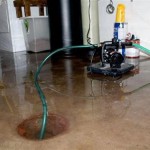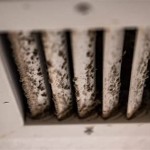How to Get Rid of Musty Basement Smell in Clothes
A musty basement smell clinging to clothes is a common yet frustrating problem for many homeowners. This odor, often a telltale sign of mold and mildew growth, can permeate fabrics and linger even after washing. The underlying cause usually involves excessive moisture and poor ventilation, creating an environment conducive to microbial activity. Addressing this issue requires a multi-faceted approach that includes identifying the source of the odor, treating the affected clothes, and implementing preventative measures to avoid future occurrences.
The musty smell is essentially the volatile organic compounds (VOCs) released by mold and mildew as they decompose organic matter. These VOCs are what the human nose detects as a stale, damp, and sometimes earthy odor. The basement environment, typically characterized by high humidity and fluctuating temperatures, allows these microorganisms to thrive. Clothing stored in such conditions absorbs these VOCs, resulting in the persistent musty smell.
Understanding the root causes of the musty smell is crucial for effective remediation. While addressing the clothes themselves is important, it's only a temporary solution if the underlying environmental conditions are not corrected. Thorough investigation and proactive measures are essential to eliminate the problem permanently.
Identifying the Source of the Musty Odor
The first step in eliminating the musty smell is to pinpoint its origin. While the clothes themselves may be the immediate problem, the source likely resides within the basement environment. A careful inspection of the basement is paramount, focusing on areas that are particularly prone to moisture accumulation.
Look for visible signs of mold or mildew growth. These may appear as dark spots, discoloration, or a fuzzy texture on walls, floors, ceilings, and stored items. Pay close attention to areas around windows, pipes, and foundations, as these are common entry points for moisture. Examine carpets and rugs, as they can trap moisture and provide a breeding ground for mold. Check for leaks or water damage, even if seemingly minor, as they can contribute to elevated humidity levels.
Assess the basement's ventilation. Inadequate airflow can trap moisture and create a stagnant environment, promoting mold growth. Ensure that vents are clear and not obstructed. Consider installing or using a dehumidifier to reduce humidity levels. A hygrometer, a device that measures humidity, can be used to monitor the basement's moisture levels regularly. Optimal humidity levels should be between 30% and 50% to inhibit mold growth.
Examine stored items for potential sources of moisture or mold. Cardboard boxes, in particular, are susceptible to moisture damage and can harbor mold growth. Consider replacing cardboard boxes with plastic containers for storing items in the basement. Inspect any fabrics or upholstered furniture stored in the basement for signs of mold or water damage.
If the source of the musty odor is not immediately apparent, consider hiring a professional mold inspector. These professionals have specialized equipment and expertise to detect hidden mold growth and identify the underlying causes of moisture problems. A professional inspection can provide valuable insights and recommendations for remediation.
Treating Clothes Affected by Musty Basement Smell
Once the source of the musty odor has been identified, the next step is to treat the affected clothes. Several methods can be employed to remove the odor and sanitize the fabrics. The best approach will depend on the severity of the odor and the type of fabric.
Begin by sorting the clothes according to fabric type and color. This will prevent colors from bleeding and ensure that each item is treated appropriately. Check the care labels for specific washing instructions and any restrictions on the use of certain cleaning agents.
For most washable clothes, a regular washing machine cycle with hot water and a strong detergent is a good starting point. Hot water is more effective at killing mold spores and removing odors than cold water. Add one cup of white vinegar or baking soda to the wash cycle to help neutralize odors. Vinegar and baking soda are natural deodorizers that can effectively remove musty smells without damaging fabrics.
For delicate fabrics or clothes that cannot be washed in a machine, hand washing may be necessary. Use a mild detergent and lukewarm water. Gently agitate the clothes to remove dirt and odors. Rinse thoroughly with clean water and allow them to air dry.
Sunlight is a natural disinfectant and deodorizer. After washing, hang the clothes outdoors in direct sunlight to dry. Sunlight can kill mold spores and help to remove lingering odors. However, be careful to avoid prolonged exposure to sunlight, as it can fade colors over time.
For clothes that are badly affected by the musty smell, consider using a commercial odor remover specifically designed for laundry. These products contain enzymes that break down odor-causing molecules. Follow the instructions on the product label carefully.
If the musty smell persists after washing and drying, consider soaking the clothes in a solution of water and borax. Borax is a natural laundry booster that can help to remove stubborn odors and stains. Add one cup of borax to a gallon of water and soak the clothes for several hours or overnight. Rinse thoroughly with clean water and wash as usual.
Dry cleaning is another option for removing musty smells from clothes. Dry cleaning solvents can effectively remove odors and sanitize fabrics. However, dry cleaning is not suitable for all types of fabrics. Check the care label before taking clothes to the dry cleaner.
Preventative Measures to Avoid Future Musty Smells
Preventing future occurrences of musty smells in clothes requires a proactive approach to controlling moisture and maintaining good ventilation in the basement environment. Implementing these preventative measures will significantly reduce the risk of mold and mildew growth and keep clothes smelling fresh.
Control humidity levels in the basement. A dehumidifier can effectively reduce humidity and prevent mold growth. Choose a dehumidifier with a capacity appropriate for the size of the basement. Regularly empty the dehumidifier's water reservoir and clean the unit according to the manufacturer's instructions.
Improve ventilation in the basement. Ensure that vents are clear and not obstructed. Consider installing exhaust fans to improve airflow. Open windows periodically to allow fresh air to circulate, weather permitting. However, avoid opening windows during periods of high humidity, as this can exacerbate the problem.
Address any leaks or water damage promptly. Repair any leaks in pipes, roofs, or foundations immediately. Clean up any water spills or leaks quickly and thoroughly. Consider installing a sump pump to remove excess water from the basement.
Choose appropriate storage containers for clothes and other items stored in the basement. Avoid using cardboard boxes, as they are susceptible to moisture damage. Use plastic containers with airtight lids to protect clothes from moisture and dust. Store clothes in a well-ventilated area of the basement.
Regularly inspect the basement for signs of mold or mildew growth. Pay close attention to areas that are prone to moisture accumulation. Clean up any mold or mildew growth promptly using a mold-killing cleaner. Wear protective gear, such as gloves and a mask, when cleaning mold.
Wash clothes regularly, especially those that are stored in the basement. This will help to prevent the buildup of odors and mold spores. Avoid storing damp or unwashed clothes in the basement.
Consider using moisture absorbers in the basement, such as silica gel packets or charcoal filters. These products can help to absorb excess moisture and prevent mold growth. Replace moisture absorbers regularly according to the manufacturer's instructions.
By implementing these preventative measures, homeowners can significantly reduce the risk of musty smells in clothes and maintain a healthy and odor-free basement environment. Regular monitoring and maintenance are essential to ensure that the basement remains dry and well-ventilated.

6 Ways To Get The Musty Smell Out Of Clothes And Towels

How To Get Rid Of Basement Smell In Clothes 10 Easy Methods

Forgotten Laundry How To Remove The Stink From Clothes Left In Washer Dana K White A Slob Comes Clean

How To Get Rid Of Mold And Mildew Smell In Your Basement Aircare

How To Get Rid Of Musty Smell In Basement Keep Away

How To Prevent The Clothes In Your Closet From Smelling Musty

3 Ways To Remove Mildew Smell From Clothing Wikihow

How To Get Rid Of Basement Odor And Why It Smells In The First Place

Musty Smell In Clothes What Causes It How To Get Rid Of And More

How To Get Rid Of Musty Smells In Cabins Basements And More 11 Simple Ways This Diy Life
Related Posts







